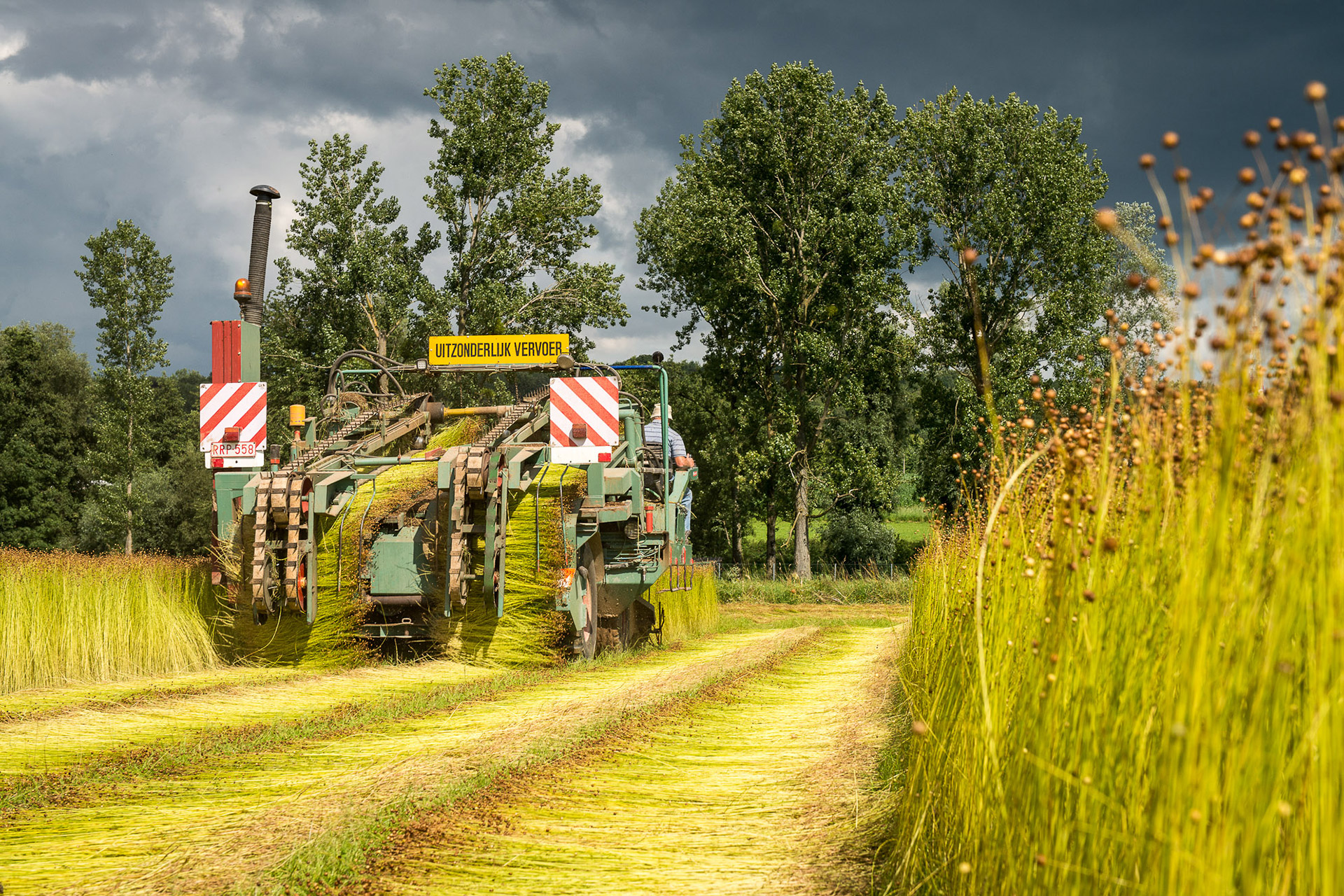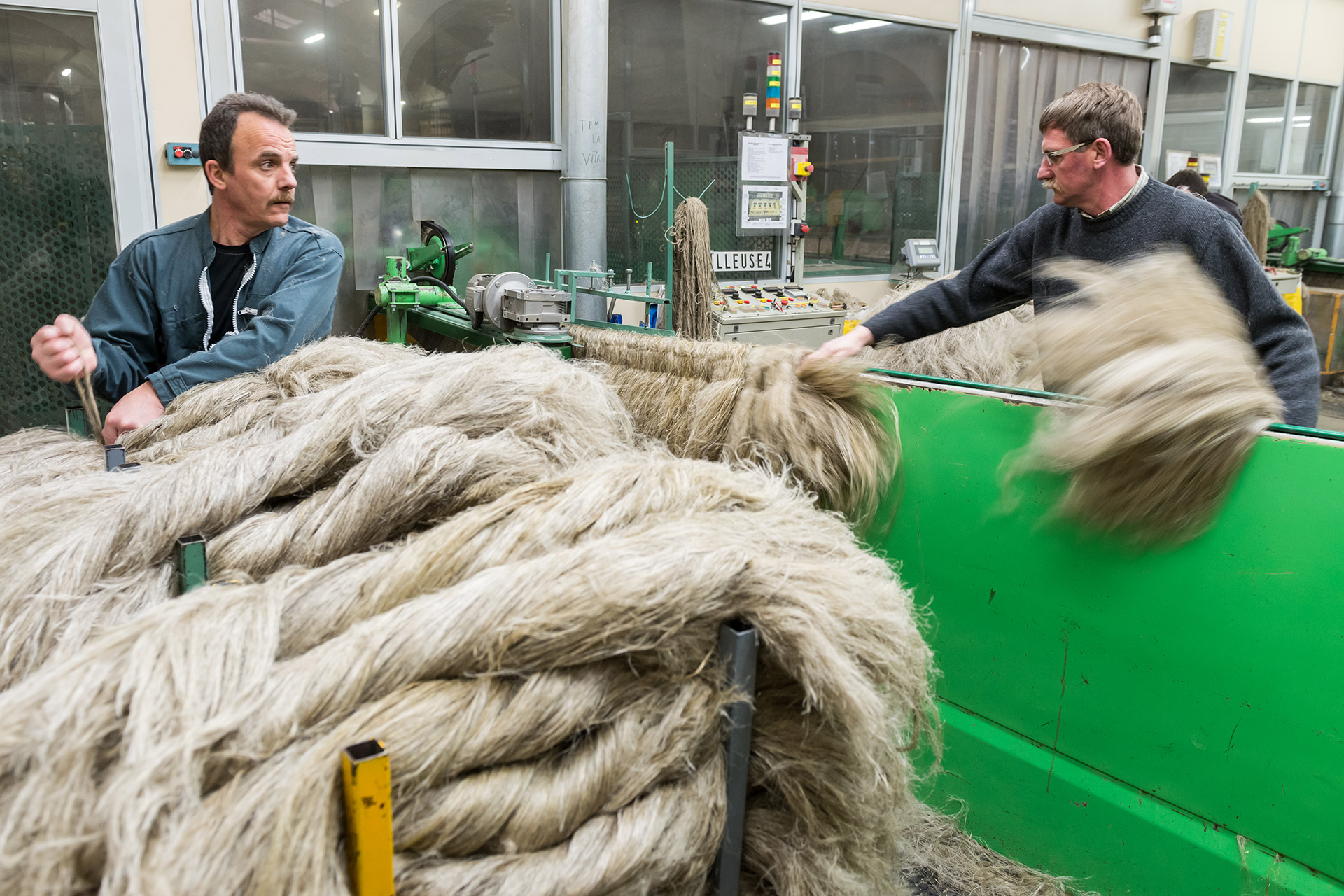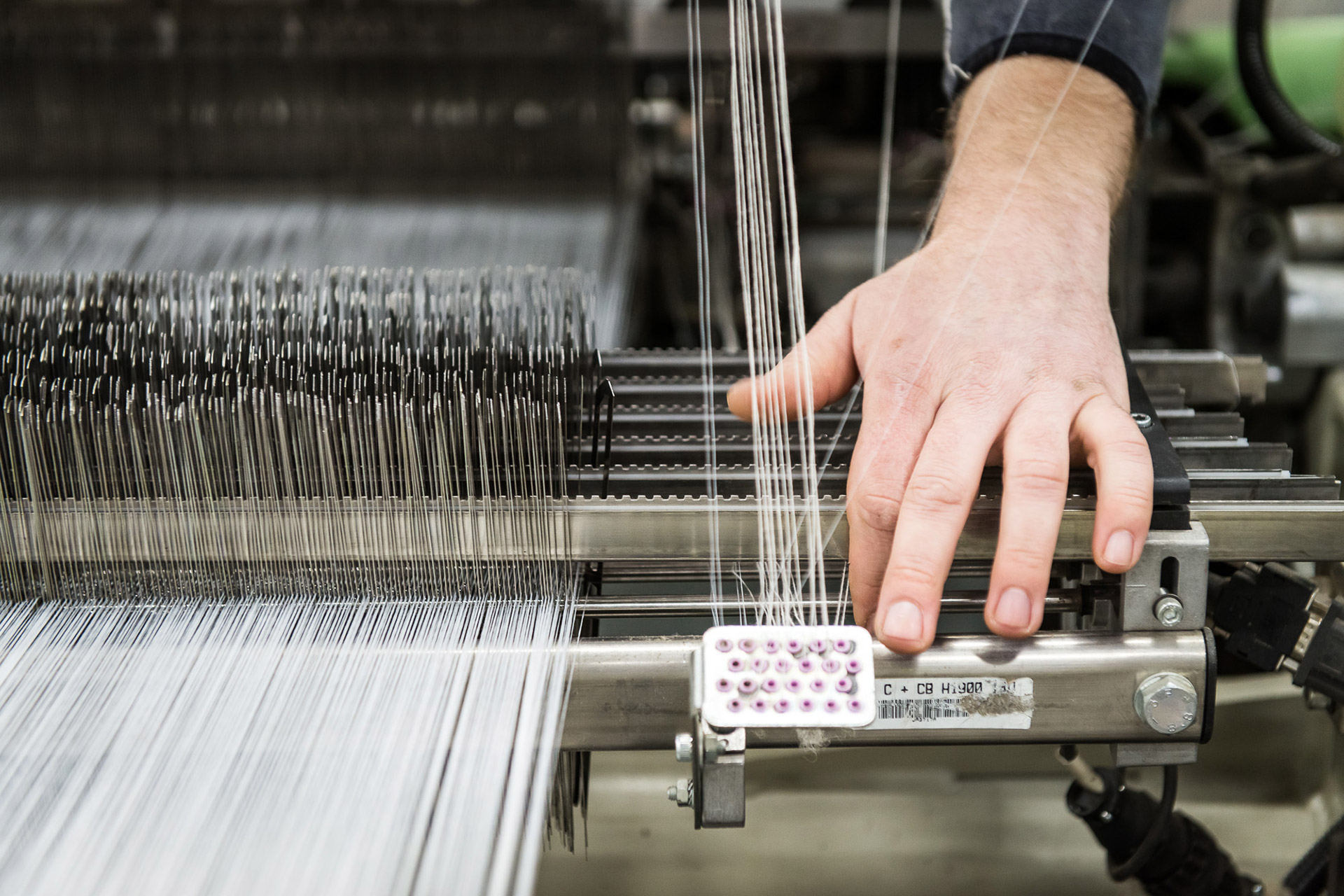contact
+32 9 228 10 81
info@nelen-delbeke.be
address
Industriezone 17
9770 Kruisem – Belgium
+32 9 228 10 81
info@nelen-delbeke.be
Industriezone 17
9770 Kruisem – Belgium
© CELC
Planting takes place in March or April depending on the region. Flax seeds are planted 1 to 2 cm deep, and take only 100 days to reach maturity. Some 80 to 100 leaves will sprout from the stem. Growing to a height of about 100 cm, the plant blooms in June. Each plant produces one flower that lasts for a few hours only.
Pulling starts in July, once the lower third of stalks have lost their leaves. Flax is not reaped but pulled, to preserve the full length of the stalks. These are then gathered into bundles about 1 metre wide, known as windrows, which lie in the fields. After pulling, the long roots still in the soil fertilize it, thus conferring flax’s status as an excellent rotation crop.

© CELC
Retting, from July to September, is the first step in the transformation from plant to fibre, and is entirely natural. Rainwater, morning dew and sunshine help the naturally ccurring microorganisms and bacteria in the soil to eliminate the pectin that binds the flax fibres to the hard inner core of the stalk. To ensure uniform retting, the windrows are turned over mid-way through the season. Once retting is completed, the flax is bundled into bales.
The flax fibres are found in the outer envelope of the stalk. They have to be extracted, then rid of the inner wooden core (shives). A mechanical process, scutching can be performed at any time of year. The successive steps are known as shelling, stretching, grinding and threshing. Nothing goes to waste: all fibres long and short and all by-products (seeds and shives) are put to use, for instance in animal bedding.

© CELC
During this step, combed flax ribbons from several different batches of fibre, from different plots, regions and even harvests are all mixed in together. This assembly, on a par with methods used for champagne and cognac, leverages the properties of each batch and thus produces yarn of high quality and consistency over time. The higher the required yarn quality, the higher the number, with up to 32 different batches.
The blended and stretched slivers are twisted via different techniques to form a vast range of yarns: wet spinning achieves fine yarn used for clothing and household linen, while dry spinning produces thicker, more rustic yarns for home furnishings and rope. Yarn counts are sorted by metric number (Nm) that correspond to the number of kilometres of yarn produced using 1 kg. The higher the value, the finer the yarn, ranging from Nm1 to Nm60, and even Nm100.
Weaving involves criss-crossing warp yarns (which run lengthwise) with weft yarns (which run width-wise) to create a woven fabric. The many different weaves – twill, satin, etc. – combined with varying thicknesses and yarn effects, have led to the development of a host of different creative fabrics for fashion, household linen, home furnishings, and a wide variety of finishes for luxury goods.

© CELC
Nelen & Delbeke is a 4th generation family owned weaving mill committed to providing its customers with a broad range of exceptional products that are distinguished by their excellent design. This thanks to a complete updated and hightech loom park.
+32 9 228 10 81
info@nelen-delbeke.be
Industriezone 17 – 9770
Kruisem – Belgium